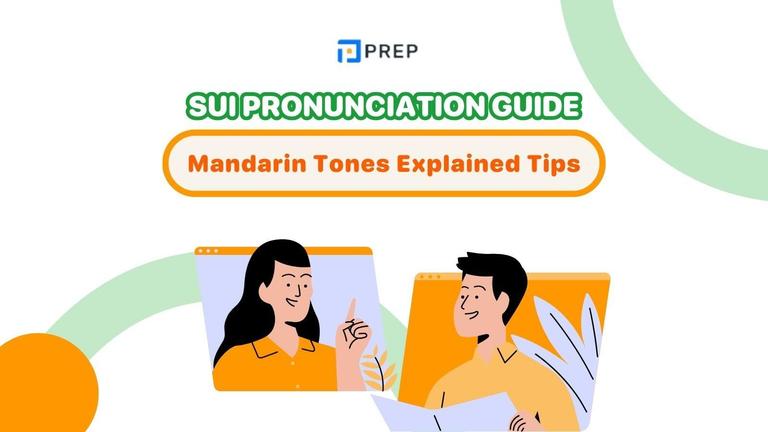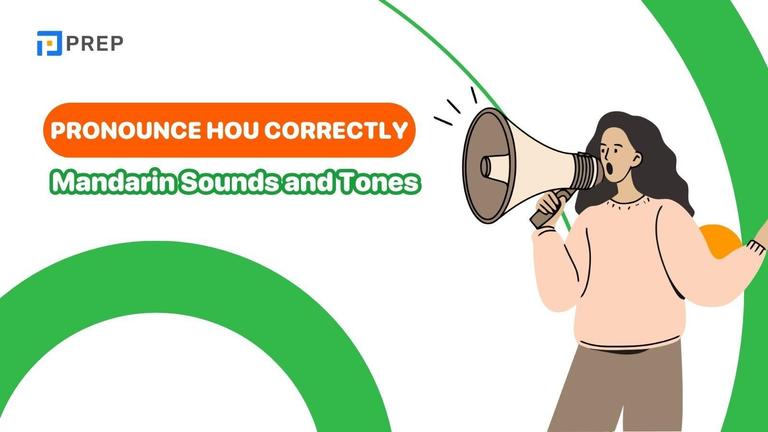Used to in English: Definition, Rules and Examples
The phrase “used to” in English describes past habits or states that no longer happen in the present. In this guide, you’ll learn its meaning, grammar structure, and how to form questions or negatives. Includes real-life examples and simple exercises for better practice.

I. What is Used to in English?
The phrase “used to” is a common structure in English grammar that expresses actions, habits, or states that happened regularly in the past but no longer occur in the present.
According to the Oxford English Dictionary, “used to” is defined as:
"a phrase used to refer to something that regularly happened or was true in the past but that does not happen or is not true now."
It is a helpful structure for talking about past routines, behaviors, or situations that have since changed.
When to Use “Used to”:
Below is an overview of common situations where “used to” is appropriate:
|
Situation |
Explanation |
Example Sentence |
|
A repeated habit or action in the past |
Talking about something you did regularly, but don’t do now |
I used to jog every morning. |
|
A past state that no longer exists |
Referring to a condition that was true before but not anymore |
She used to live in France. |
|
Comparing the past with the present |
Highlighting a change between what happened before and what happens now |
We used to believe email was fast — now we use chat apps. |
Key Notes:
-
"Used to" is followed by the bare infinitive (used to + V).
-
Common with action verbs (play, drive, write) and state verbs (be, believe, live).
-
Do not use it for things that are still true.
1. The Grammar Structure of “Used to”
The phrase “used to” follows a consistent grammatical pattern and is used with the bare infinitive verb (the base form without “to”) to describe past habits or states. Although it refers to the past, it is not treated like a typical past tense verb when forming questions or negatives.
Below are the key sentence structures with “used to”:
|
Sentence Type |
Structure |
Example 1 |
Example 2 |
|
Affirmative |
Subject + used to + base verb |
I used to play the piano. |
She used to work late every day. |
|
Negative |
Subject + didn’t use to + base verb |
I didn’t use to like vegetables. |
They didn’t use to have a car. |
|
Interrogative |
Did + subject + use to + base verb? |
Did you use to go to that school? |
Did she use to live in New York? |
Important Notes:
-
Do not confuse “used to” with “use to” in writing. In affirmative sentences, always write “used to”.
-
The verb following “used to” is always in its base form, such as go, live, play, not goes or playing.
-
In speech, “used to” and “use to” may sound the same, but in writing, the distinction matters.
Understanding this structure is essential to using “used to” accurately, whether in conversation, writing, or standardized English exams.
-
For more patterns with base verbs, explore causative verbs.
2. Difference Between “Used to” and Similar Structures’
Although “used to,” “be used to,” and “get used to” may look similar, they differ in meaning, structure, and how they function in a sentence. This section breaks down the differences to help you use each one correctly.
Quick Overview of Meanings
|
Structure |
Meaning |
Example Sentence |
|
used to + V (base) |
Describes a past habit or state that no longer exists. |
I used to live in London. |
|
be used to + V-ing / noun |
Expresses that someone is familiar or comfortable with something. |
She is used to waking up early. |
|
get used to + V-ing / noun |
Refers to the process of becoming familiar or comfortable with something. |
I’m getting used to my new job. |
Structure Comparison Table
|
Structure |
Form |
What follows |
Time Focus |
|
used to |
used to + V (bare infinitive) |
base verb |
Past habit/state |
|
be used to |
be + used to + noun / V-ing |
Gerund or noun |
Present familiarity |
|
get used to |
get + used to + noun / V-ing |
Gerund or noun |
Ongoing adaptation |
Example Breakdown
-
Used to (past habit/state):
I used to eat fast food every day. (But I don’t anymore.) -
Be used to (present comfort):
She is used to the cold weather. (It doesn’t bother her.) -
Get used to (process of adapting):
He is getting used to working night shifts. (It's still difficult, but improving.)
Important Notes:
-
After used to, always use the base form of the verb (no -ing).
-
After be/get used to, use a noun or a gerund (V-ing).
-
While “used to” only refers to the past, "be/get used to" can work in any tense depending on the verb “be” or “get”.
Mastering these differences will help you avoid one of the most common grammar mistakes among intermediate English learners.
-
If you want to review the difference between verb forms, check to v and ving.
II. Examples of “Used to” in Real-life Contexts
Learning grammar is useful—but knowing how to apply it in real-life situations is essential. Below are practical examples of “used to” in both everyday communication and academic settings. These sentences show how native speakers naturally express past habits or states using this structure.
In Daily Life and Conversations
|
Situation |
Example Sentence |
|
Talking about a childhood habit |
I used to play outside every day after school. |
|
Describing a change in preference |
I used to hate coffee, but now I drink it daily. |
|
Past living arrangements |
We used to live near the beach. |
|
Past job or role |
She used to work as a graphic designer. |
|
Past friendship or relationship |
They used to be close friends in high school. |
|
Talking about technology changes |
People used to rent movies from video stores. |
These examples reflect common topics like childhood, lifestyle changes, habits, and places—perfect for everyday conversations.
-
You can also learn an effective study method with English grammar note-taking.
In Academic and Exam Contexts
|
Context in IELTS / TOEFL |
Example Sentence |
|
Writing Task 2 – Personal example |
I used to rely heavily on social media for news, but now I read newspapers. |
|
Speaking Part 1 – Talking about the past |
I used to visit my grandparents every weekend when I was a child. |
|
Argument comparison |
Traditional markets used to dominate local trade before the rise of supermarkets. |
|
Making general points about change |
Students used to carry textbooks, but now they mostly use laptops. |
In exams, using structures like “used to” helps show grammatical variety and time awareness—important for scoring well in both writing and speaking.
By practicing with real-life examples, you will not only understand the grammar rule but also learn how to communicate more fluently and naturally.
-
For more grammar foundations, read common nouns and proper nouns.
III. Practice with “Used to” – Exercises and Quizzes
Understanding the grammar rule is only the first step—practicing actively is what helps you truly remember and use “used to” naturally. Below are guided exercises and quick quizzes for learners to review sentence structure, recognize usage patterns, and avoid common mistakes.
Exercise 1. Fill-in-the-Blank Exercise
Complete the sentences with the correct form of “used to” or “didn't use to.” Use the base form of the verb.
Example:
-
I __________ (eat) a lot of fast food, but now I cook at home.
-
She __________ (live) in Canada before moving to Japan.
-
We __________ (not/play) outside so much during winter.
-
__________ you __________ (watch) cartoons every weekend?
-
They __________ (have) an old piano in their house.
Exercise 2. Rewrite the Sentences
Rewrite each sentence using the structure “used to.”
Example:
-
Before: She walked to school every day.
-
After: She used to walk to school every day.
-
He lived in a big house when he was a child.
-
They went to the same coffee shop every morning.
-
I didn’t like spicy food back then.
-
Did she live near the train station?
Exercise 3. Choose the Correct Option
Select the correct form of "used to" that fits the sentence.
-
We _________ go hiking every summer when we were kids.
a) use to
b) used to
c) using to
d) used -
_________ you use to play football with them?
a) Did
b) Do
c) Does
d) Do you -
I _________ use to like reading, but now I love it.
a) didn’t
b) wasn’t
c) don’t
d) not
Answer
[prep_collapse_expand open_text="View more" close_text="Show less"]
|
Exercise 1 |
Exercise 2 |
Exercise 3 |
|
|
|
[/prep_collapse_expand]
Understanding “used to” in English is more than learning a grammar rule — it’s about expressing how your past shaped who you are today. So start with one memory, say it in English, make it real, and keep going. Practice it, apply it, and let each sentence move you closer to fluency.

Hi I'm Chloe, and I am currently serving as an Product Content Administrator at Prep Education. With over five years of experience in independent online IELTS study and exam preparation, I am confident in my ability to support learners in achieving their highest possible scores.
Comment
Premium content
View allPersonalized roadmap
Most read












